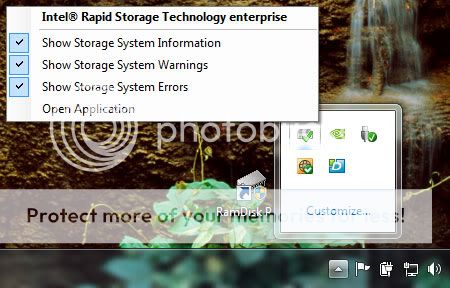Hi all,
I have an Asus p8Z77 coming in today for my new build and I was hoping to get some suggestions from some of you who may have worked with this board.
What I am wondering is if I will be able to use a SSD as my boot drive and raid together two HDDs for all of my other programs along with a single TB HDD for storage. These drives are being recycled from my current system and in my current setup I wasn't able to raid two and keep two single, it was all raid or all single.
Additionally, the p8Z77 has two different SATA controllers, Intel and ASMedia, so I am thinking this may be possible, but is one better to use for the SSD vs the other? Also, I should note that the SSD is rated for 6Gb/s while the other HDDs are only rated for 3Gb/s. Any help is appreciated. Thanks all.
Summary:
p8Z77
1xSSD 6Gb/s - boot drive
2xHDD 3Gb/s - raid
1xHDD 3Gb/s - storage
I have an Asus p8Z77 coming in today for my new build and I was hoping to get some suggestions from some of you who may have worked with this board.
What I am wondering is if I will be able to use a SSD as my boot drive and raid together two HDDs for all of my other programs along with a single TB HDD for storage. These drives are being recycled from my current system and in my current setup I wasn't able to raid two and keep two single, it was all raid or all single.
Additionally, the p8Z77 has two different SATA controllers, Intel and ASMedia, so I am thinking this may be possible, but is one better to use for the SSD vs the other? Also, I should note that the SSD is rated for 6Gb/s while the other HDDs are only rated for 3Gb/s. Any help is appreciated. Thanks all.
Summary:
p8Z77
1xSSD 6Gb/s - boot drive
2xHDD 3Gb/s - raid
1xHDD 3Gb/s - storage




